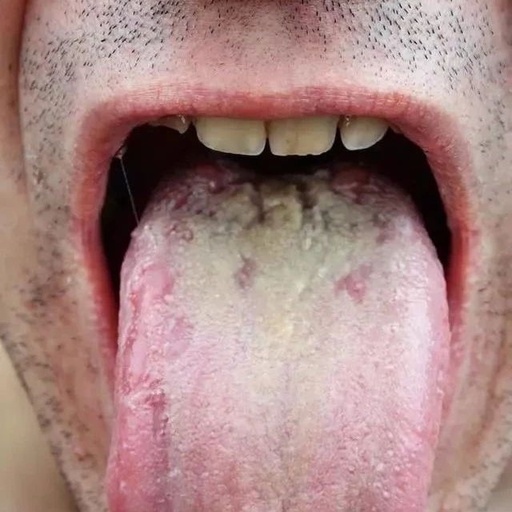Click the blue text

Follow us
In the occurrence and development of diseases, changes in the tongue are rapid and obvious, serving as a mirror to the internal organs, reflecting various conditions of disease occurrence, development, and outcome. In modern medicine, tongue diagnosis has formed a unique diagnostic method. The significance of observing tongue diagnosis includes the following:
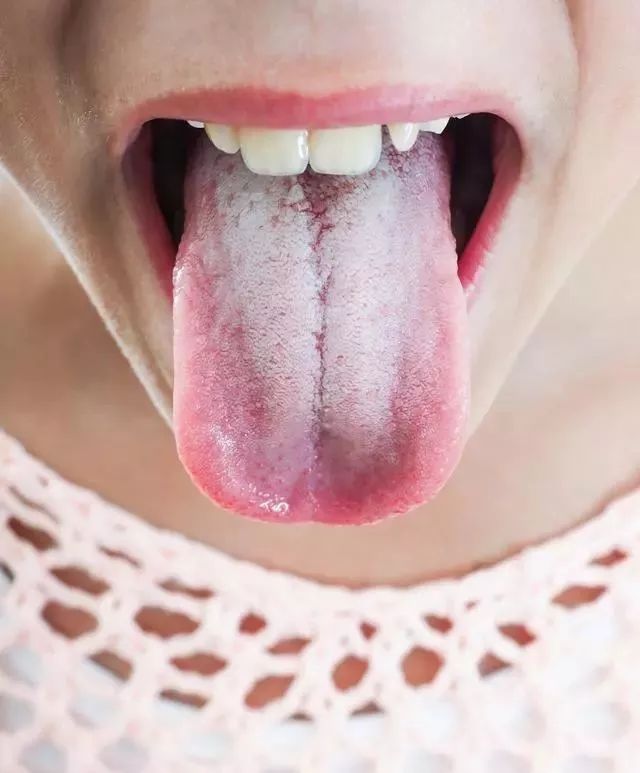
① It can determine the functional state of the body. For example, a pale red tongue that is soft and flexible with a thin white coating indicates health without disease.
② It can determine the location and nature of the disease. For instance, a normal tongue body with a thin white slippery coating indicates a superficial condition, while a red tongue body with a thick yellow dry coating indicates a deeper and more severe condition.
③ It can assess the severity and prognosis of the disease. The best way to observe the tongue is under sunlight, with the tongue naturally extended outside the mouth, both sides flattened, fully exposing the tongue body, and carefully observing the various changes in tongue quality and coating to self-assess the disease.
1. Observing Tongue Color
The normal tongue body is pale red and moist, soft, and flexible. When ill, the tongue color changes.
Depending on the type of disease, the tongue color can vary, commonly observed in the following types:
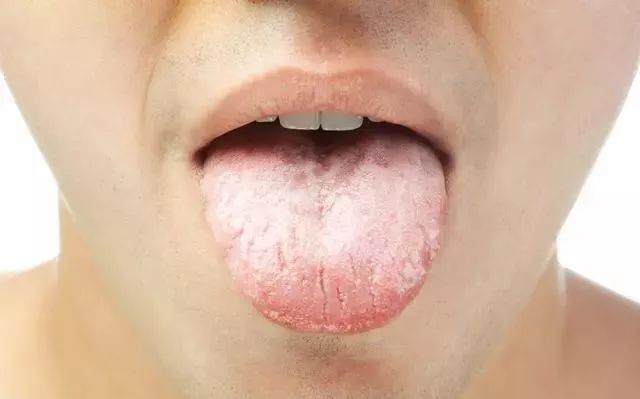
① Pale white tongue. This indicates a paler than normal tongue color, a sign of qi and blood deficiency, suggesting that qi and blood cannot nourish the tongue. Clinically, it is often seen in individuals with chronic diseases and low body function, such as anemia, malnutrition, and chronic nephritis. Symptoms may include dizziness, fatigue, palpitations, and shortness of breath.
② Red tongue. This indicates a tongue color that is redder than normal, caused by heat diseases. The tongue body is congested due to abundant heat blood flow. If the tongue is red and dry with prickly cracks, it is often seen in patients with high fever and severe conditions, such as lobar pneumonia, viral pneumonia, and viral encephalitis. A red tip of the tongue is often seen in patients with insomnia and fatigue; a red edge of the tongue is common in hypertension and hyperthyroidism.
③ Deep red tongue (Jiang tongue). This is a deep red tongue, generally evolving from a red tongue. It is characterized by dryness, prickly surface, and cracks, and may show spots. Patients may experience confusion, delirium, irritability, and insomnia. Deep red tongue is often seen in acute and severe patients, such as septicemia, encephalitis, and abdominal abscess.
④ Purple tongue. This indicates a blue-purple tongue or blue-purple spots. It is caused by heat diseases damaging yin and severe dehydration, leading to stagnation of blood flow in the tongue’s vessels. Patients may exhibit lethargy, pale complexion, and cold hands and feet. Purple tongue is often seen in critically ill patients with a poor prognosis.
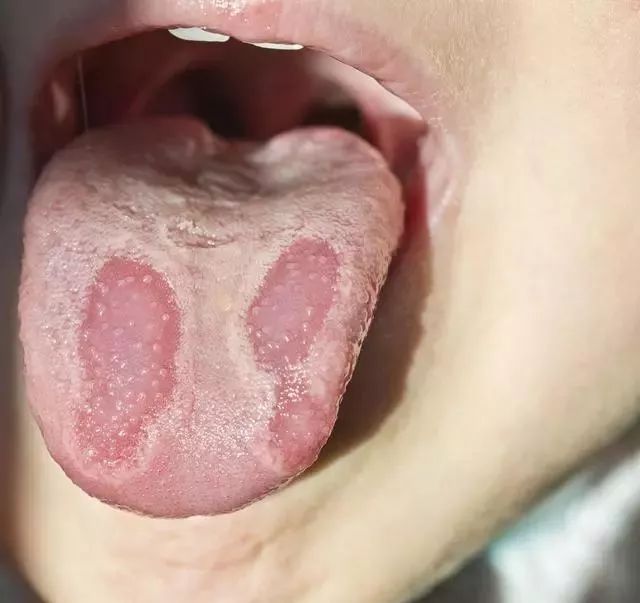
2. Observing Tongue Shape
This method involves observing abnormal changes in the shape of the tongue to diagnose diseases. The tongue shape refers to the form of the tongue, which changes when ill.
① Thin and delicate tongue. This indicates a tongue body with fine texture and delicate appearance, often seen in chronic nephritis and chronic deficiency-cold patients.
② Thick and coarse tongue. This indicates a tongue body with a rough texture and a dry appearance, often seen in acute heat diseases.
③ Thin and emaciated tongue. This is primarily due to malnutrition, leading to atrophy of the tongue muscles and epithelium, commonly seen in chronic wasting diseases such as diabetes and cancer.
④ Swollen tongue. This indicates a swollen and enlarged tongue, primarily a sign of spleen and kidney yang deficiency, seen in conditions like chronic colitis, diarrhea, and pancreatitis.
⑤ Prickly tongue. This indicates hypertrophy of the tongue papillae, appearing prickly, often seen in red deep red tongue, associated with high fever pneumonia and acute heat conditions.
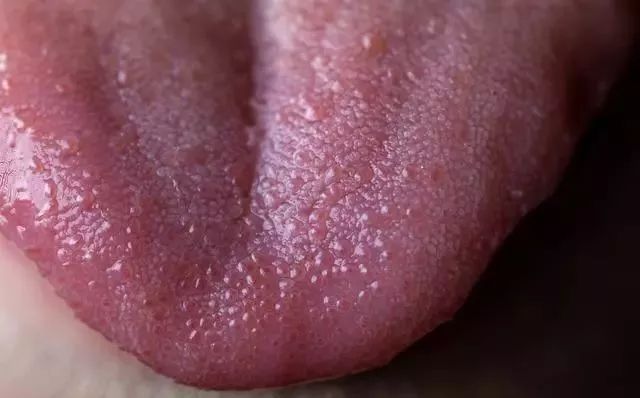
3. Observing Tongue State
① Rigid tongue. This indicates a hard tongue that cannot move freely, often seen in comatose patients, such as those with viral encephalitis, hepatic coma, cerebral hemorrhage, and cerebral contusion.
② Deviated tongue. This indicates a tongue that is skewed, often seen in conditions like cerebral hemorrhage, cerebral infarction, and intracranial tumors.
③ Flaccid tongue. This indicates a weak tongue that cannot extend or retract, often due to myasthenia gravis or neurological diseases.
④ Trembling tongue. This indicates a tongue that trembles involuntarily, seen in chronic illness, indicating deficiency of both qi and blood, and malnourishment of the tendons and vessels, such as in heat diseases with internal wind, which may precede convulsions; it can also be seen in hyperthyroidism and severe neurasthenia.
⑤ Protruding tongue. This indicates a tongue that is extended and relaxed, protruding outside the mouth, or a tongue that extends and retracts or licks around the lips, often seen in children with intellectual developmental disorders and hypothyroidism.
⑥ Short and retracted tongue. This indicates a tongue that cannot extend outside the mouth, often seen in acute myocardial infarction, hepatic coma, and comatose states due to cerebral diseases.
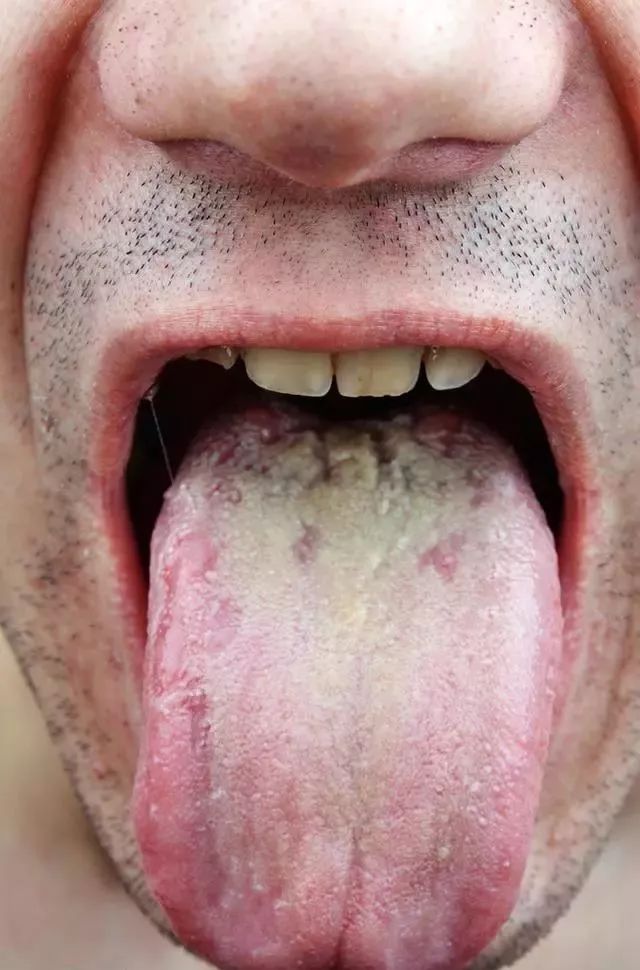
4. Observing Tongue Coating
The normal tongue coating is evenly thin and thick, with moderate moisture. In the presence of disease, changes in coating color and quality can reflect the severity and location of the disease.
① Coating color. This refers to the color of the tongue coating, which changes depending on the type of disease or the stage of the disease, transitioning from the original thin white coating to white, yellow, or black coatings.
White coating is often seen in early or mild diseases, indicating a good prognosis, such as in upper respiratory infections.
Yellow coating indicates internal heat, seen in conditions like lobar pneumonia, bronchopneumonia, pulmonary heart disease, and urinary tract infections.
Gray and black coatings are similar in nature, but black coating indicates a more severe condition than gray coating, often developing from yellow coating. Patients may experience severe fluid depletion, high fever, flushed face, thirst for cold drinks, yellow urine, dry stools, confusion, and delirium. Black coating can also be seen in late-stage conditions like lung cancer and gastrointestinal cancers.
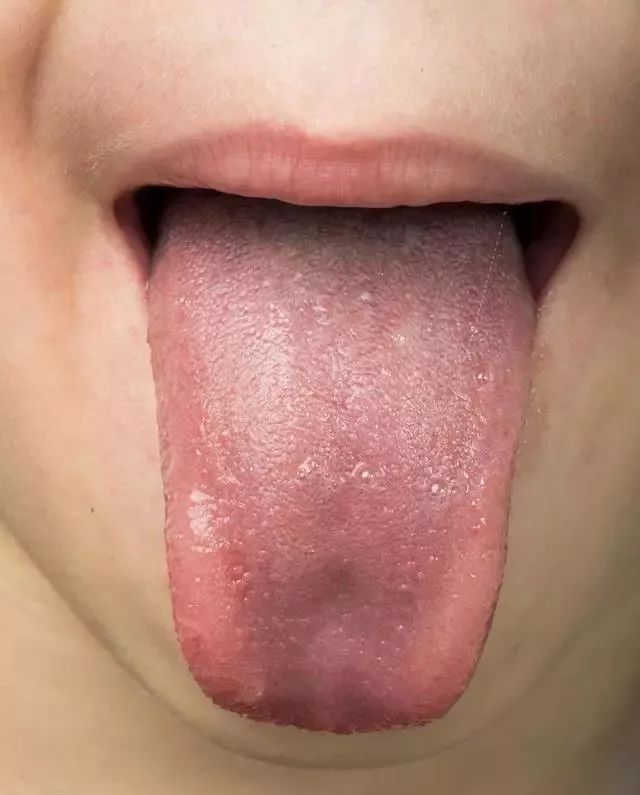
② Coating quality. This involves observing abnormal changes in the quality of the tongue coating to diagnose internal diseases. Common observations include:
Thickness. A thin coating indicates that the tongue body can be faintly seen through the coating, suggesting an early or mild disease; a thick coating indicates that the tongue body cannot be seen through the coating, suggesting a severe condition. If the coating changes from thin to thick, it indicates disease progression; conversely, if it changes from thick to thin, it indicates improvement, which is a good sign.
Moisture. A moist coating indicates a smooth and moist surface, suggesting that saliva can still be secreted, indicating the presence of fluids; a dry coating indicates dryness and reduced fluids, suggesting fluid depletion and impaired saliva secretion.
Greasy and rotten. A greasy coating indicates a dense and fine texture, often seen in constipation, chronic diarrhea, and digestive disorders; a rotten coating indicates a loose and coarse texture, thick like rotten residue, often seen in children with food accumulation and intestinal obstruction.
Desquamation. A flowered desquamation indicates incomplete shedding of the tongue coating, often seen in children with malnutrition or picky eating; complete desquamation leading to a mirror tongue is often seen in critical conditions, such as septicemia, pulmonary heart disease, and gastric cancer.
Rooted or non-rooted. A rooted coating indicates a firm and solid coating that cannot be scraped off, suggesting the presence of stomach qi, seen in excess or heat conditions; a non-rooted coating indicates a coating that can be easily scraped off, suggesting severe depletion of stomach qi, seen in deficiency or cold conditions.


